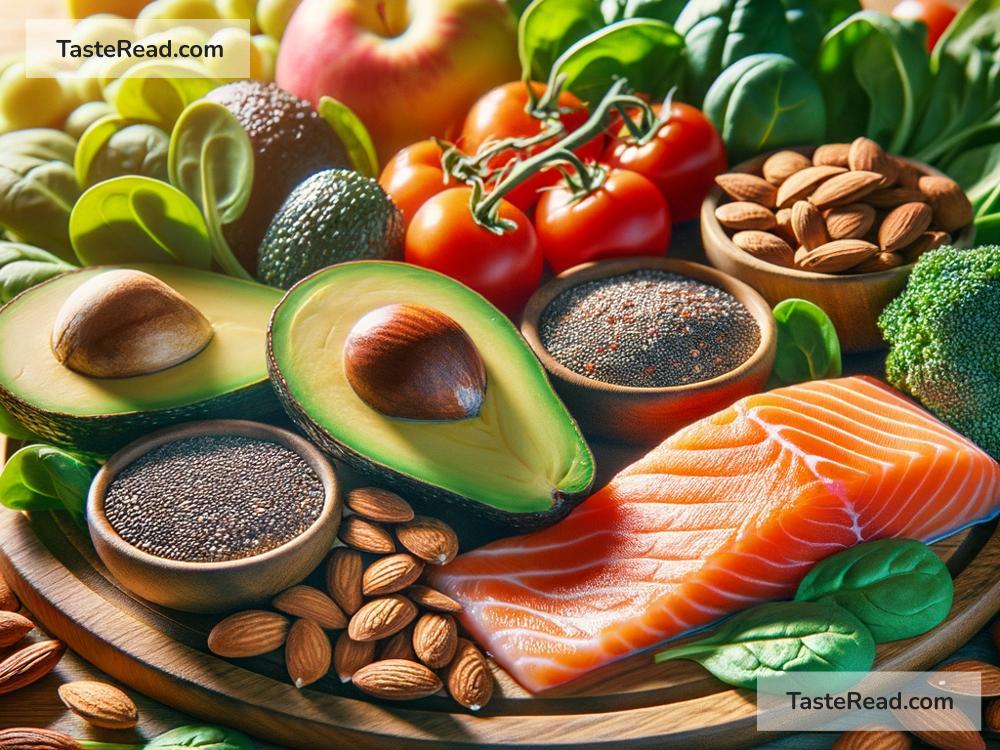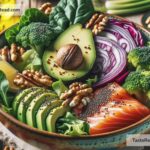Foods for Boosting Glucagon-Like Peptide-1 (GLP-1): Supporting Your Health Naturally
In recent years, scientists have explored ways our body controls blood sugar levels and keeps hunger in check. One key discovery is the role of glucagon-like peptide-1 (GLP-1), a hormone that plays a big part in regulating appetite, blood sugar, and insulin production. Boosting GLP-1 naturally could help maintain healthy blood sugar levels, aid in weight management, and improve overall health.
What’s interesting is that certain foods can help increase GLP-1 levels in your body. In this article, we’ll explore simple, everyday foods that may enhance GLP-1 and support a healthy lifestyle. Whether you’re looking to manage your weight, improve your energy levels, or feel healthier, you can add these foods to your diet with little effort. Let’s dive in!
What Is GLP-1 and Why Is It Important?
GLP-1 is a hormone released by your gut when you eat food. It helps regulate blood sugar by signaling your pancreas to produce insulin, which lowers your blood sugar levels. At the same time, GLP-1 slows down stomach emptying, which makes you feel full for longer and reduces your appetite. These effects make GLP-1 an important hormone for maintaining balanced energy levels and supporting metabolic health.
Doctors use medications called GLP-1 receptor agonists to treat diabetes and certain weight-related health conditions. However, you can also nourish your body in ways that naturally enhance GLP-1 production — starting with your plate!
Foods That May Enhance GLP-1 Naturally
Certain foods have been shown to play a role in boosting GLP-1 levels or mimicking its effects. These are mostly whole, nutrient-rich foods that support your gut and metabolism. Here are some examples:
1. Protein-Rich Foods
Protein is a big player when it comes to enhancing GLP-1. Eating protein triggers the release of GLP-1 and helps you feel fuller for longer — keeping hunger in check and stabilizing your blood sugar.
- Eggs: A great source of high-quality protein and an excellent breakfast choice.
- Fish and Lean Meats: Salmon, chicken, turkey, and lean cuts of beef are protein-rich options to include in your meals.
- Plant Proteins: If you prefer plant-based food, go for beans, lentils, tofu, tempeh, and hummus.
2. Fiber-Rich Foods
Fiber improves gut health, promotes satiety, and helps regulate blood sugar levels — all of which support GLP-1 production in the digestive system.
- Whole Grains: Oats, brown rice, quinoa, and barley are high-fiber grains that encourage GLP-1 activity.
- Vegetables: Greens like spinach, broccoli, and kale, along with root veggies like carrots and sweet potatoes, are loaded with fiber.
- Fruits: Apples, pears, berries, and citrus fruits contain soluble fiber that supports digestion.
3. Healthy Fats
Adding healthy fats to your diet can boost GLP-1 levels and help you stay satisfied after meals. Fats also slow digestion, supporting the hormone’s ability to make you feel full.
- Avocado: Rich in healthy monounsaturated fats and fiber, avocado is a GLP-1-friendly food.
- Nuts and Seeds: Almonds, chia seeds, flaxseeds, and walnuts are great choices for snacks or toppings.
- Olive Oil: Swap out less healthy oils for extra virgin olive oil to get those heart-healthy fats.
4. Fermented Foods
Maintaining a healthy gut environment is key to GLP-1 production. Fermented foods support gut health by increasing beneficial bacteria, which play a role in producing GLP-1.
- Yogurt: Look for plain, unsweetened yogurt with live cultures for gut-friendly benefits.
- Kefir: A fermented drink similar to yogurt that provides probiotics for digestion.
- Sauerkraut and Kimchi: These pickled veggies are flavorful and packed with good bacteria.
5. Spices and Seasonings
Certain spices and seasonings may help promote healthy blood sugar and support GLP-1 production.
- Turmeric: Curcumin, the active compound in turmeric, may help boost GLP-1 activity.
- Cinnamon: This common spice is known for regulating blood sugar levels and supporting metabolism.
- Garlic: Rich in compounds that benefit blood sugar control and digestion.
6. Green and Herbal Teas
Studies suggest that some teas may stimulate GLP-1 production and support its beneficial effects. Hydrating with tea is a simple way to reap these perks.
- Green Tea: Contains catechins that may improve GLP-1 levels and metabolism.
- Chamomile Tea: May support digestion and blood sugar regulation.
Lifestyle for Better GLP-1 Production
Apart from eating the right foods, certain lifestyle choices can enhance GLP-1 naturally:
– Exercise regularly: Physical activity boosts GLP-1 levels and improves insulin sensitivity.
– Sleep well: A good night’s rest helps regulate hormones, including GLP-1.
– Eat mindfully: Savoring meals slowly promotes balanced hormone release.
Takeaway
Enhancing GLP-1 doesn’t require drastic changes — it starts with small, simple tweaks to your diet and lifestyle. Eating foods rich in protein, fiber, healthy fats, and probiotics, along with enjoying green tea and spices, can give your body a natural boost. Combined with exercise, good sleep, and mindful eating, these habits may help regulate blood sugar, curb hunger, and promote overall well-being.
By focusing on whole, nutrient-rich foods and healthy habits, you’re not just taking care of your GLP-1 levels, but also creating a foundation for long-term health. Give some of these foods a try, and enjoy their benefits in your daily life!


